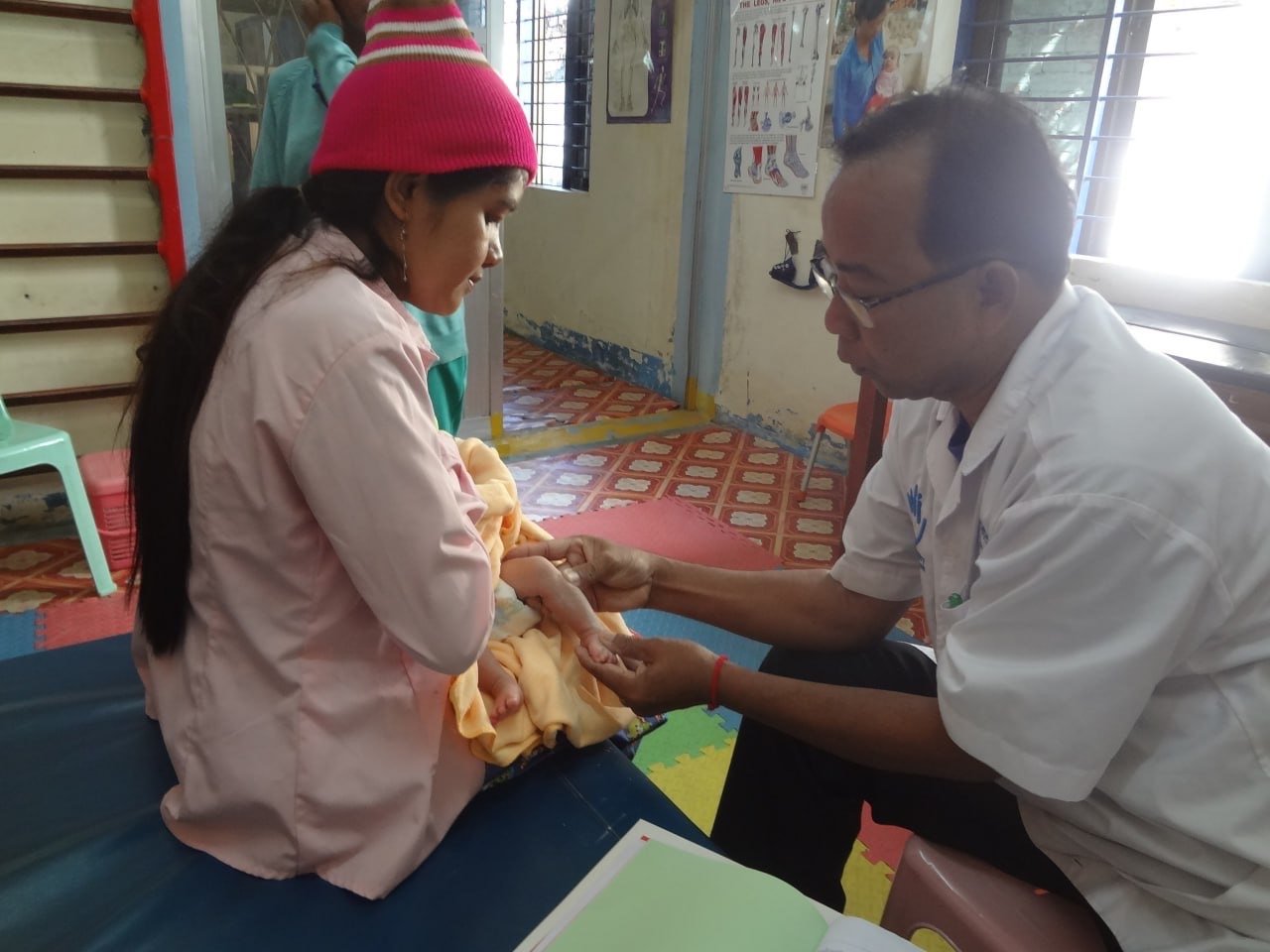Phon, Un Sonita's grandmother, remembers the day she was born as if it were yesterday. It was 6 November 2019. The happiest day of her life.
"Un Sonita was the first baby to come into the family, so you can imagine how happy I was for my daughter who was becoming a mother for the first time and for me as a grandmother".
Un Sonita lives with her parents and grandparents in a small wooden house surrounded by banana trees and bamboo in a village half an hour by tuk-tuk from Kampong Cham, Cambodia’s third largest city. Phon explains her family's story:
"My daughter had to leave school at a very young age because we couldn't afford to send her and we needed money to live on. She came to help me in the cashew fields. My daughter and her husband work hard every day to bring us food. They do one odd job after another, and today they had to drive 7 hours to get to their new construction job ...”
For those close to her, Nita's arrival was a blessing. But just a few days after her birth, during a medical visit, the specialist examined the baby and noticed that one of her feet was rotated inwards. He quickly made the diagnosis: Un Sonita had clubfoot.
"He quickly explained what it was, but I didn't understand everything. We were all in a panic, and my biggest fear was that Nita would never be able to walk! We didn't know what to do, who to contact...," recalls Phon.
 On the doctor's advice, Nita's mother and grandmother took the baby to the village clinic where they learnt about HI's rehabilitation centre in Kampong Cham. Phon explains that their lives changed when they met HI’s medical team.
On the doctor's advice, Nita's mother and grandmother took the baby to the village clinic where they learnt about HI's rehabilitation centre in Kampong Cham. Phon explains that their lives changed when they met HI’s medical team.
After spending some time in a cast, the little girl was fitted with an orthopaedic splint with booties to keep her clubfoot rotated outward. As she grew, HI's teams gradually adjusted the splint until her foot was straight and she could walk properly.
"Today, my granddaughter runs all over the place. She's fully recovered and, for me, it's a dream come true. My hope is that she will be able to go to school and complete her education, maybe even go on to higher education because we never got that chance," concludes Phon.
Dozens of children like Un Sonita are being cared for at the HI rehabilitation center in Kampong Cham province, Cambodia, thanks to support from the Ministry of Foreign Affairs of Luxembourg.
Vimean SRON, Head of Physiotherapy at the Kampong Cham rehabilitation centre in Cambodia:
"I remember the first time our teams met Un Sonita, accompanied by her mother and grandmother. She was so small, a newborn. Her malformation was very severe.
Talipes equinovarus, commonly known as clubfoot, is a birth defect affecting one or both feet. It is twice as common in boys as in girls.
Early diagnosis and treatment are very important. Babies' feet are still soft and flexible. Treatment is therefore simpler and less painful and there is a strong likelihood of a positive outcome.
On the other hand, if treatment is delayed too long, the defect may worsen, become extremely debilitating and even prevent the child from walking.


 On the doctor's advice, Nita's mother and grandmother took the baby to the village clinic where they learnt about HI's rehabilitation centre in Kampong Cham. Phon explains that their lives changed when they met HI’s medical team.
On the doctor's advice, Nita's mother and grandmother took the baby to the village clinic where they learnt about HI's rehabilitation centre in Kampong Cham. Phon explains that their lives changed when they met HI’s medical team.


